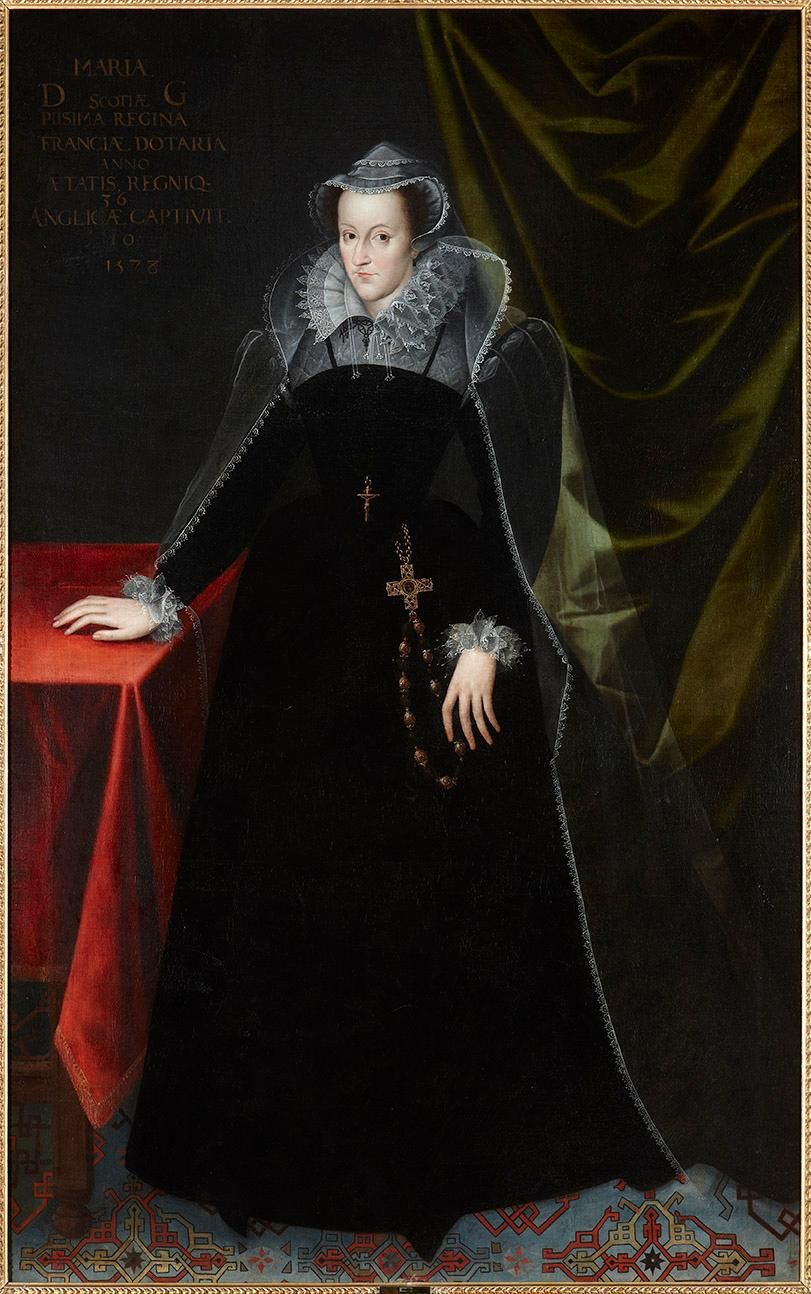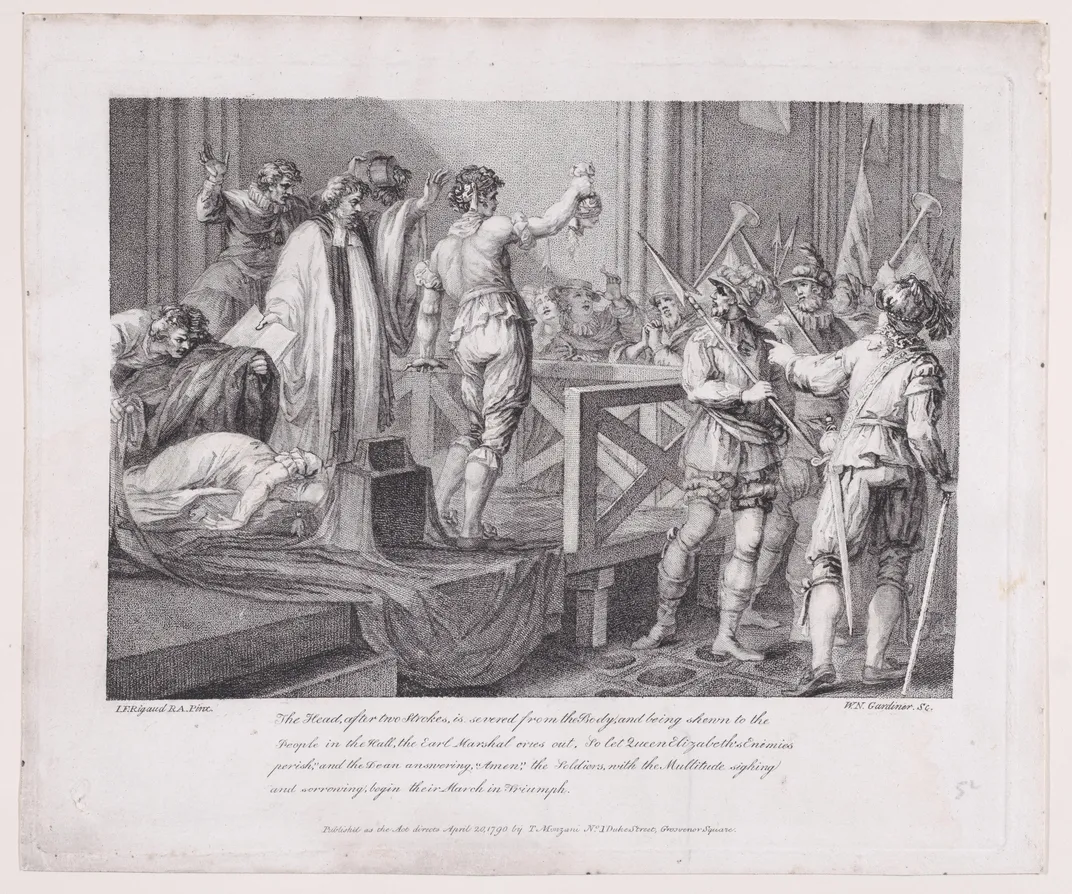Rosary Beads Owned by Mary, Queen of Scots, Stolen in Heist at English Castle
The Stuart monarch may have carried the golden beads—taken last Friday in a $1.4-million burglary—to her execution in 1587
:focal(380x304:381x305)/https://tf-cmsv2-smithsonianmag-media.s3.amazonaws.com/filer/bb/90/bb90ea63-82bf-4b7c-81b9-9be8e65d6e94/mqs.jpg)
Thieves snuck in through a window at Arundel Castle, a 1,000-year-old palace in West Sussex, England, on Friday night, smashing a glass cabinet and—in a matter of minutes—making off with a trove of gold and silver items worth more than $1.4 million, per a Sussex Police report.
Alarms sounded on the premises around 10:30 p.m., alerting authorities, who arrived on the scene after the perpetrators had fled, reports BBC News. Police discovered the likely getaway car—set on fire and abandoned in a nearby town—and an empty display case that once held artifacts including a gold rosary owned by Mary Stuart, otherwise known as Mary, Queen of Scots.
Crowned queen of Scotland just six days after her birth in 1542, Mary was deposed in 1567 and forced to flee to England, where her cousin (and rival) Elizabeth I effectively imprisoned her for 18 years. In 1587, when Mary was 44 years old, Elizabeth had her Scottish cousin executed for allegedly taking part in assassination plot against the Tudor queen.
As Ben Mitchell reports for the Press Association, Mary may have carried this rosary on her person as she recited her final prayers in Latin and knelt at the executioner’s block. In a grisly scene, the axman struck Mary’s neck three times before fully severing her head from her body. The House of Howard, a noble English family with ties to Elizabeth’s mother, Anne Boleyn, has held the rosary in its collections at Arundel ever since.
“The rosary is of little intrinsic value as metal, but as [a] piece of the Howard family history and the nation’s heritage it is irreplaceable,” say authorities in the statement.
At the time of the theft, the castle had been reopened for less than a week, only welcoming back visitors on Tuesday, May 18, after months of closure due to the Covid-19 pandemic. In the statement, Detective Constable Molly O’Malley says that anyone who might have information about the crime should contact authorities.
“If you are offered or hear of anyone offering for sale any of the items stolen, we would also like to hear from you,” adds O’Malley.
Peter Squires, a criminologist at the University of Brighton, tells BBC News that the culprits might have a difficult time selling such recognizable goods. Besides the rosary, thieves also lifted a set of coronation cups given by Mary to the then-earl marshal, a member of the Howard family.
Speaking with the New York Times’ Isabella Kwai, James Ratcliffe, director of recoveries at the Art Loss Register, a database of stolen art, says that in the “worst case scenario,” the thieves might try to melt the items to sell as raw materials.
But Squires tells BBC News that this course of action is unlikely, pointing out that the melting process “massively reduces [the objects’] value, so to find someone who wants the items rather than just the bullion value is the thieves’ objective here.”
Elizabeth, a Protestant queen of England and the only child of Anne Boleyn and Henry VIII, perceived Mary as a threat to her tenuous hold on power. Many English Catholics considered Mary the only legitimate heir to the throne, as Meilan Solly wrote for Smithsonian magazine in 2018. (The rivalry between the two royal women has served as fodder for countless romanticized retellings in media and film.)
Mary’s gruesome execution at Fotheringhay Castle also cemented her popular status as a Catholic martyr. Kate Williams, a historian at the University of Reading, notes on Twitter that the rosary beads are “particularly significant” because they symbolize Mary’s “resistance” and commitment to her Catholic faith, even “as the men around her at her execution tried to force her to convert to Protestantism.”
How the rosary beads ended up in Arundel Castle’s collection is unclear. As Cambridge historian John Guy wrote in the 2014 biography Queen of Scots: The True Life of Mary Stuart, most of the ornaments and bloodied clothing that Mary wore to her execution were burned after her death to prevent English Catholics from honoring the items as relics. (What’s more, adds Williams in the Twitter thread, Mary’s heart was removed from her corpse and buried in the ground.)
As Guy notes, Mary “had never truly been the ideological Catholic that she … wished to appear to the world” at the time of her execution. As ruler of Scotland, she compromised on key religious differences between Protestants and Catholics.
“Only after her imprisonment in England had she reinvented herself as a poor Catholic woman persecuted for her religion alone,” the historian writes. “What happened in the great hall at Fotheringhay was for show, and it worked.”
In her final moments, as the doomed former queen prayed out loud to a crowd of some 100 onlookers, “Mary won a propaganda victory that resounded around Catholic Europe,” according to Guy.
/https://tf-cmsv2-smithsonianmag-media.s3.amazonaws.com/accounts/headshot/nora.png)

/https://tf-cmsv2-smithsonianmag-media.s3.amazonaws.com/filer/13/6b/136b9c40-305a-4675-9f61-aa70d7266bac/police_image.jpg)


/https://tf-cmsv2-smithsonianmag-media.s3.amazonaws.com/accounts/headshot/nora.png)